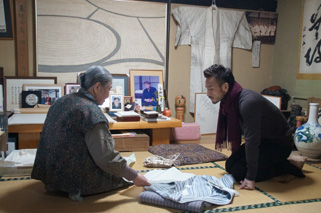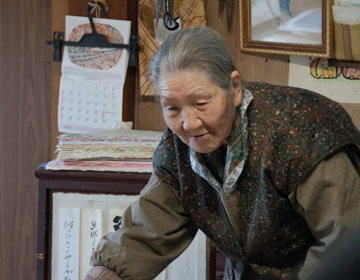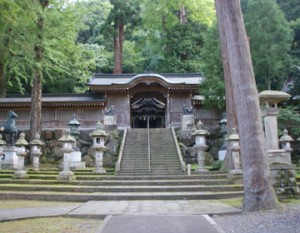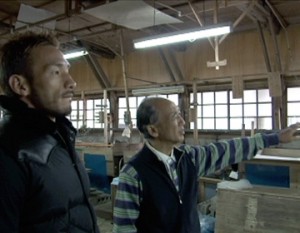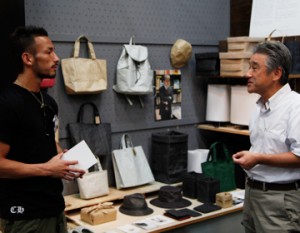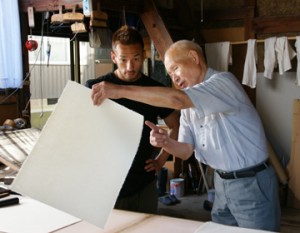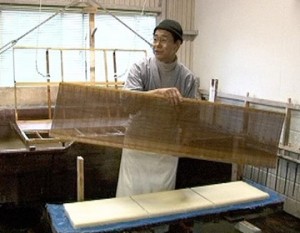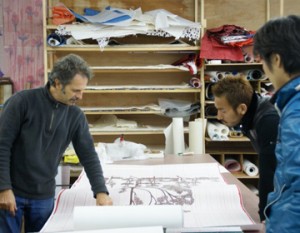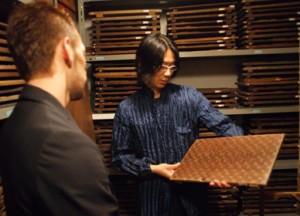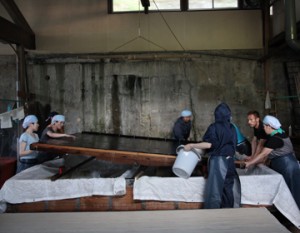A moment with auntie artisans.
When we visited ”Shiroishi Washi Workshop” in Shiroishi-shi, Miyagi, two people were making paper together.
”How long have you been working here?”, asked Nakata. ”40 years. I do the paper making, and she makes the material, also for 40 years. It’s a hard job, since we are old.” said one of the workers laughing. Here, three artisan ladies perform the tasks. From the ceiling hang several ”keta” to make paper of various sizes, and ”kozo”, the material for paper was skinned and stacked high by the window.
Watching how they moved ”suketa”, Nakata asked ”do you move the ”suketa” both sideways and back and forth when you make paper?”
”You move it back and forth when making ”paper cloth” and back and forth and sideways when making ”paper clothes”.
How the fibers overlap depends on which direction the ”suketa” is moved, so the movement is changed depending on what is being made.
”Paper cloth”(”shifu”) is a fabric woven with yarn made by cutting Japanese paper thinly and twisting it. Paper clothes (”kamiko”) is a garment made from paper that is twice painted with glue made from ”konnyaku powder”, first dried to make it strong, then rubbed to make it soft, and finally sewn into a garment.
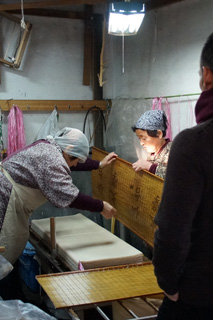
Paper cloth and paper garments that suit the climate
”Once, there were 300 ”washi” workshops, but we are the only one remaining.”, said Mashiko Endo, who greeted us at her workshop, Shiroishi Washi Workshop.
”In this district, agriculture and silkworm culture are the main industry. The silkworms are fed with mulberry leaves, but there are several different kinds of mulberry, and the silkworms are fed with different mulberry leaves each season. ”Kozo” is also made from mulberry trees, but since there are many kinds of mulberry, there are many kinds of ”kozo”.” said Endo. Out of these different kinds, the workshop uses a kind called ”kajinoki”. It has very fine, long and soft fibers, and because of this characteristic, yarn can be made from ”washi” and from the yarn, soft paper fabric can be woven.
”Tohoku was too cold to grow cotton, and cotton was very expensive. So instead of wearing cotton padded clothes, people wore paper garments to keep out the cold.”, she explained.
In summer, the paper garments absorb sweat quickly and dry quickly, and keeps one cool. In the winter, the paper garments are worn under the ”kimono” to keep one warm. The garments made from Shiroishi washi are a product of daily experience, to adapt to the climate of the region. We were shown the actual paper cloth and garments, and were surprised by the pleasant texture and their beauty.
”Everything we make is from this land, the material and the method and everything.” said Endo. There are things that can only be made in the particular climate of the land, and there are cultures that are necessary to the land.
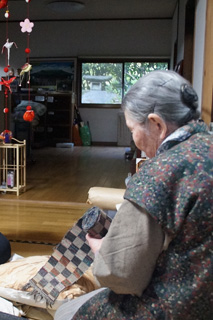
History of Shiroishi washi
The origin of Shiroishi washi is not known exactly, but it is said that in the Heian period ”washi” called ”Michinoku-gami” was made in Tohoku, and the art of paper making has continued since then. In the Edo period, the local government of the Date clan encouraged the development of paper making, and the industry flourished.
Though paper making was one of the most famous products of the Date clan, it declined for a while during the Meiji period, Endo’s husband, Tadao Endo revived the traditional art of papermaking and Shiroishi washi. Shiroishi washi was recognized for its excellent strength and durability, and was designated by the Imperial Household Agency as archival paper for recording important subjects. It continues to be used for restoration of cultural properties.
Since 1973, they have been creating the paper to make the paper garments worn by the monks participating in Shuni-e (Omizutori) at Todaiji Temple. Nowadays, only a small quantity of Shiroishi washi can be made. Each sheet is made with great care. On a pillar of the ”sukibune” in the workshop, there were these words:
”Good paper cannot be made, unless the heart is still. Take a deep breath and face the ”sukigeta””
